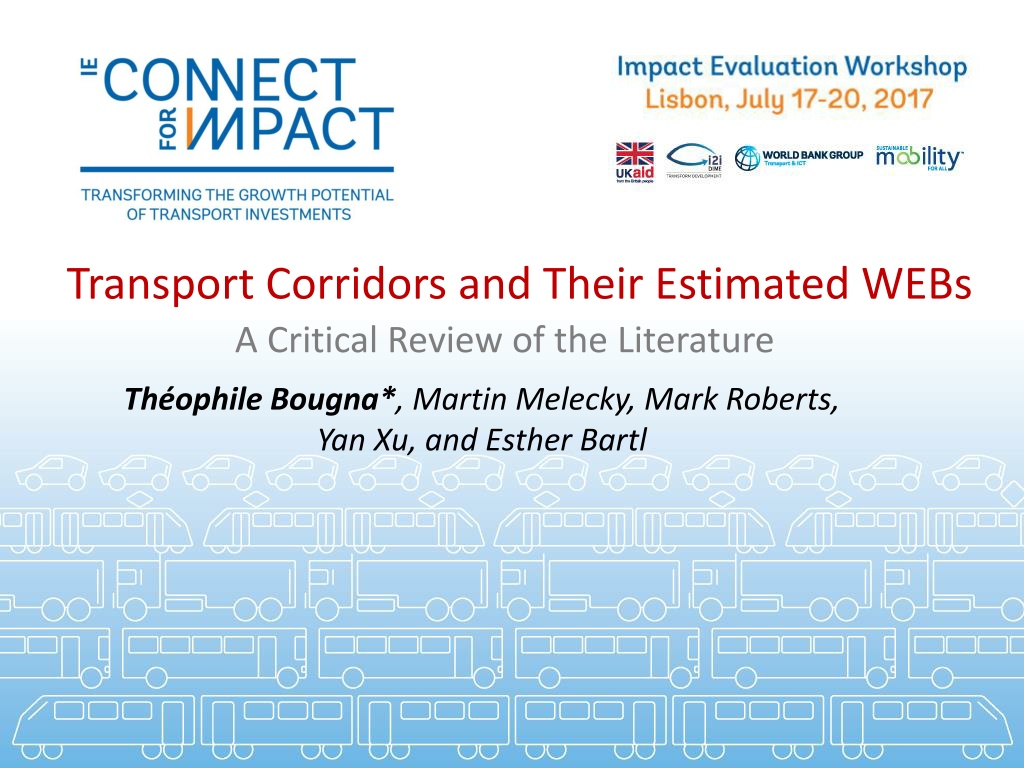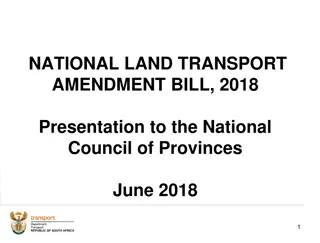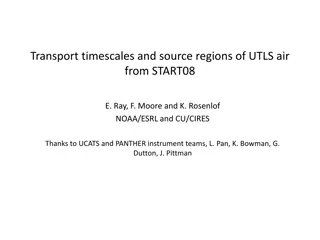Understanding the Economic Impacts of Transport Corridors: A Critical Review
This review explores the development impacts of transport corridors beyond travel time and vehicle operating cost savings, addressing winners and losers, trade-offs for policymakers, and conditions for positive net economic benefits. Key findings show a narrow focus on immediate impacts, evidence of both beneficiaries and losers, and the importance of complementary policies to enhance economic benefits.
Download Presentation

Please find below an Image/Link to download the presentation.
The content on the website is provided AS IS for your information and personal use only. It may not be sold, licensed, or shared on other websites without obtaining consent from the author. Download presentation by click this link. If you encounter any issues during the download, it is possible that the publisher has removed the file from their server.
E N D
Presentation Transcript
Transport Corridors and Their Estimated WEBs A Critical Review of the Literature Th ophile Bougna*, Martin Melecky, Mark Roberts, Yan Xu, and Esther Bartl
Big infrastructure to benefit both the big & small economy Many new corridors proposed with aim to benefit aggregate economy & create wider economic benefits (WEBs) But how to tell prosperity- boosting corridors from white elephants? And how to ensure corridors benefit many & not just the few big players?
We Ask What is range of development impacts corridors can generate beyond travel time & VOC savings? Who wins & who loses? What are the trade-offs that policy-makers need to manage? What are the conditions & complementary reforms to ensure investments produce positive net WEBs?
Key Findings Range of impacts literature examines still narrow Typical focus is on impact in immediate vicinity of newly built road systems within national borders Average impacts beneficial for most outcomes with exception of environment Some evidence of losers as well as winners Importance of complementary policies that could enable or amplify WEBs rarely considered
Outline 1.Methodology 2.Data & Descriptive Analysis 3.Meta-Regression Analysis 4.Policy Implications
Organizing Framework: Causal Links Corridor interventions generate WEBs through intermediate outcomes ( & ) Intervention Intermediate Outcomes Wider Economic Benefits (WEBs) Land value Migration Population Agglomeration Firm location Investment/FDI Structural change Productivity Trade Transport mode: Road Rail Waterway Connection type: Urban urban Urban rural Urban gateway Construction type: New system Upgrade system New link Upgrade - link Economic Welfare: Income Wages Consumption Social inclusion: Jobs Gender Equity Geographic Inter-personal Poverty Environmental: Air Pollution Deforestation Economic Resilience Empirical studies frequently estimate only impact of intervention on either WEB ( ) or on intermediate outcome ( )
Papers Identified For Review Via Considers a LARGE transport intervention: Connection between 2+ major nodes/hubs Big improvements in last mile connectivity Meets an academic standard Include gray literature Published after 1999 A. Google Scholar searches based on permutations of outcomes & transport related keywords: E.g. roads, GDP, impacts Highways, GDP, impacts Rail, Poverty, impacts etc., etc. B. Analysis of references within papers identified by A C. Consultations with experts to identify important papers missed through A & B
Increasing interest: 71% of papers published during 2011-2016 Double-blind tagging system with weekly reconciliation meetings 78 papers with 234 results (analyzed outcomes) # of Papers by Mode of Publication Number of papers in sample by year of publication Unpublish ed papers, 9% Edited book volume, 1% 20 18 16 Other working papers, 19% # of papers published 14 12 10 Journal articles, 59% 8 6 4 NBER working papers, 4% 2 0 WB 2001 2002 2000 2003 2006 2007 2008 2009 2010 2011 2012 2013 2014 2015 2016 2017 working papers, 8%
The Typical Paper Focuses On India, China, or United States Construction of new systems of roads within national borders Connections between urban centers; and rarely beyond country borders Most of studies grounded in a theoretical motivation most often an economic geography model of trade Significant WEB impacts identified mostly on: income, job creation, equity, and environment Significant intermediate impacts on: population, assets, trade, and productivity Estimations rarely consider complementary policies. (labor and trade) Strong emphasis on identification to address endogenous placement
Meta-Regression Analysis Quantitative tool designed to help synthesize findings from diverse studies of a particular phenomenon We ask two questions: 1. Can variations in estimated impacts be explained by variations in characteristics of projects & by observed methodological variations? 2. Are there policy-relevant insights that emerge from the literature e.g. evidence that certain features of projects are associated with more beneficial outcomes? Impacts relate to diverse outcomes derived using diverse treatment variables & modelling approaches estimated coefficients on treatment not comparable Use t-statistics provides standardization: Higher t-stat can be result of: (i) stronger treatment effect; and/or (ii) more precisely estimated treatment effect Ordered probit model as robustness check
Summary of Results Significant beneficial effects on economic welfare & equity By contrast: Impact on social inclusion significantly smaller / less certain Impact on environment detrimental trade-offs between different outcomes Also evidence that while average WEBs for income & jobs are positive, some places may lose Compared with roads, impacts of rail significantly smaller / less certain Larger/ more certain impacts in Africa than in Western Europe Endogenous placement is real: relative to IV, OLS estimation produces higher t-stats Compared with urban-urban connections, significantly smaller / less certain impacts for urban-gateway connections: Ability of urban-gateway connections to generate benefits depends on, e.g., efficiency of ports, trade barriers etc.
Policy Implications From Meta-Analysis Evidence of positive WEBs in terms of income & jobs, but with trade-offs between outcomes Solid evidence of significant positive average WEBs in terms of both income & jobs Evidence of detrimental impacts on environment & social inclusion Greater / more certain impacts if: Invest in roads rather than rail? But need to be careful most of evidence on rail relates to 19th century! Smaller / less certain impacts if: Focus on connections to international gateways? Important to look for evidence of heterogeneous impacts not just in their own right, but because may also affect estimates of average impacts Help answer the question of what would happen if expenditure was distributed differently Shall we spend more in areas that are less economically successful hinge?
Blind Spots & Caveats More & higher quality research on impacts beyond income, trade, productivity & jobs required More research is required on the impacts of more modern rail projects and multi-modal transport projects Understanding of role of complementary policies still in its infancy partly because literature often aims to isolate impacts of the transport intervention from other confounding policy factors Lack of attention to costs in literature Development of CBA toolkit would benefit from more high-quality ex ante applications in literature























